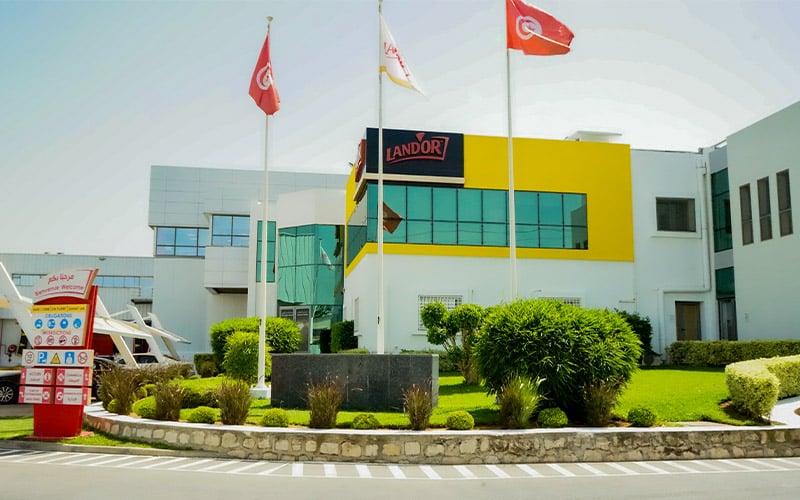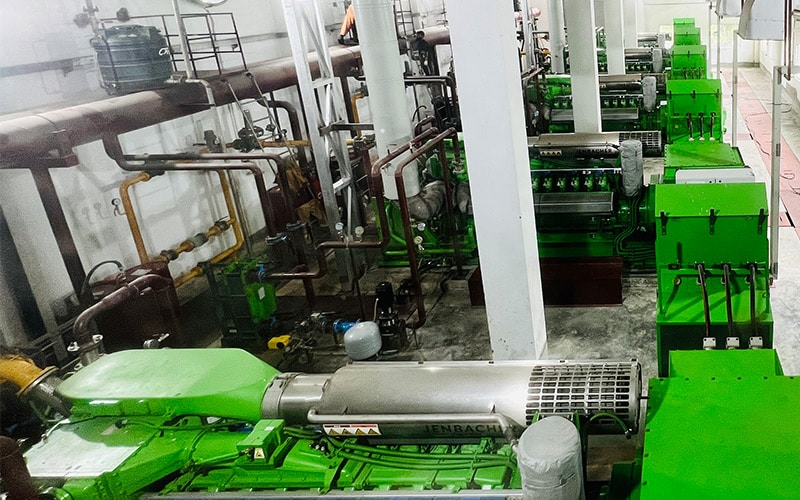Selective Catalytic Reduction (SCR) for CHP Plants
Along with the supply of a Jenbacher cogeneration plant, Clarke Energy can provide exhaust gas catalysts for the scrubbing of exhaust gases. Exhaust gas purification systems are able to reduce harmful exhaust gases by up to 95%. The exhaust gas purification system can consists of up to three consecutive stages, depending on the requirements of the application, to purify the exhaust gases:
- The soot filter (not always required).
- The selective catalytic reduction (SCR) process for reducing the oxides of nitrogen (NOx)
- The oxidation catalyst process for catalytic combustion of CO and un-burnt hydrocarbons.
Soot Filter
It is known that fine particles of soot produced within an internal combustion engine can have a carcinogenic effect if they become attached to lung tissue. A fibrous soot filter can filter the fine particles from the exhaust gas. The particles are burnt away at operating temperature within the system on the catalyst-impregnated fibre surface, without using external energy.
Selective Catalytic Reduction Process
This process is used to reduce oxides of nitrogen, which are produced during combustion process which releases energy from hydrocarbon-based fuels. NO (nitrogen oxide) is a colourless gas that oxidizes in the air to form NO2 (nitrogen dioxide). In high concentrates it causes symptoms of paralysis to the nervous system. NO2 is a red-brown gas with a sharp pungent smell. Together with sunlight and hydrocarbons, NO2forms smog. The nitrogen oxides are reduced in the oxygen-bearing exhaust gases by the SCR-process. The exhaust gas, treated with metered urea reactant solution, passes through the fine cell honeycomb-patterned converters, reducing the oxides of nitrogen to water and nitrogen. The urea process is an advantageous alternative to ammonia as a reactant for reducing nitrogen oxide levels in engine exhaust emissions. Compared to ammonia, urea offers considerable advantages with regards to transportation, storage and handling while being considerably cheaper.
Oxidation Catalyst Process
This process is used to reduce the levels of carbon monoxide and un-burnt hydrocarbons in the exhaust gas. This is achieved by catalytic oxidation. Such a catalyst can be installed following the SCR-stage. The pollutant gases diffuse through to the surface of a ceramic honeycomb, coated with noble metals, causing a reaction to form hydrogen and carbon dioxide. Un-burnt Hydrocarbons (HC) may be found in the exhaust gas of internal combustion engines. Such exhaust gases contain various un-burnt hydrocarbons with differing properties:
- Saturated hydrocarbons (paraffins) are virtually odourless and can have a slight narcotic effect.
- Unsaturated hydrocarbons (olefins, acetylenes) contribute significantly to smog
- Aromatic hydrocarbons are nerve poisons with a narcotic effect and some are carcinogenic Aldehydes have a pungent odour and even in low concentrations strongly irritate the eyes and nose.
Exhaust gas purification systems can be installed on both stationary and mobile equipment on gas and liquid fuelled internal combustion primary movers.




